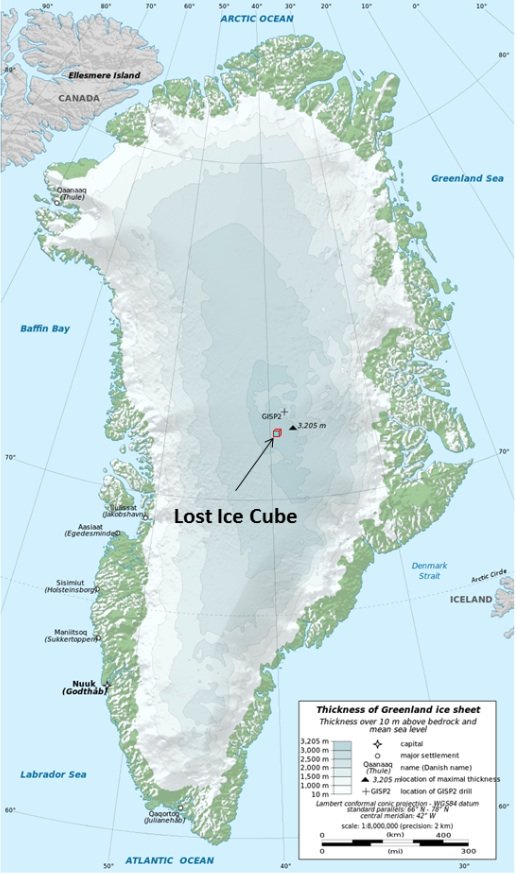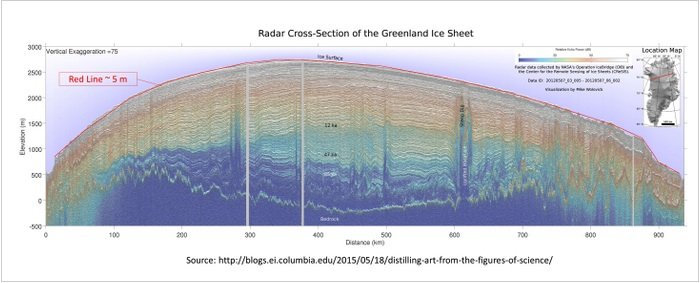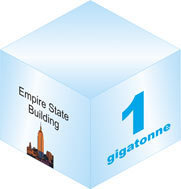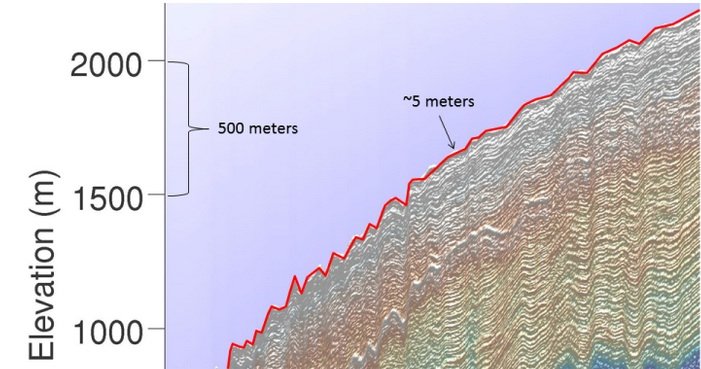Greenland Lost 9 Trillion Tons of Ice in Century
Which sounds even more serious than the original headline...
Greenland has lost 9,000 billion tons of ice in a century
One would think that the fact that 99.7% of Greenland's ice sheet survived the 20th Century might just be more scientifically relevant than a 0.3% loss... But I guess that doesn't make for a very dramatic headline.
Here's the math...
First I converted 9 trillion tons to metric tonnes.Now that I roughly knew the volume of ice loss during the 20th century, I needed to know how much ice volume was still in place. I chose to rely on the USGS and their figure of 2,600,000 km3.
9,000,000,000,000 tons = 8,164,662,660,000 tonnes
Then I converted tonnes to gigatonnes.
8,164,662,660,000 tonnes = 8,165 gigatonnes
Then I converted gigatonnes of ice to cubic kilometers, assuming 1 Gt = 1 km3.
8,165 Gt ~ 8,165 km3
Note: This conversion is inexact because ice is slightly less dense than water. But it is close enough for this exercise.
So now I could calculate the percentage of ice volume which survived the 20th century...
The ice volume at the onset of the 20th century should be...To put the math into perspective, I'm going to actually rely on the SkepScibots...
2,600,000 km3 + 8,165 km3 = 2,608,165 km3
Converting to percentage surviving the 20th century...
2,600,000 km3 / 2,608,165 km3 = 0.997 = 99.7%
So, throughout the 20th century, Greenland lost about 8,165 gigatonne ice cubes. 8,165 km3 equates to a 20 km x 20 km x 20 km cube of ice (3√ 8,165 = 20.136565). That would be one big@$$ cube of ice!
However, it's not even a tiny nick when spread out over roughly 1.7 million square kilometers of ice surface. That works out a sheet of ice about 5 meters thick.
2,600,000 km3 / 1,700,000 km2 = 1.53 kmThe average thickness of the Greenland ice sheet is approximately 1.5 km (1,500 meters). 5 meters is obviously 0.3% of 1,500 meters.


While my math may not be exact, estimates of the volume of the Greenland ice sheet vary from 2.6 to 5.5 × 106 km3. The difference between 2.6 and 5.5 million cubic kilometers of ice is quite a bit larger than 9,000 gigatonnes. For that matter, GRACE derived estimates of recent (2003-2011) ice mass balance vary widely as do the glacial isostatic adjustments...
For the analyzed period, the ice mass balance of Greenland and the corresponding GIA correction are, respectively, − 256 ± 21 Gt yr−1 and − 3 ± 12 Gt yr−1 (1%) for SM09, − 253 ± 23 Gt yr−1 and − 6 ± 5 Gt yr−1 (2%) for AW13, and − 189 ± 27 Gt yr−1 and − 69 ± 19 Gt yr−1(36%) for Wu10 (table 1). At the regional scale, the ice mass estimates are more dependent on the GIA correction, especially in NE Greenland where the Wu10-GIA correction is the largest portion of the signal measured by GRACE (table 1).With ~±10% margins of error in modern satellite measurements of glacial mass balance and GIA accounting for up to 1/3 of the reported ice mass loss, it is truly amazing that a 0.3% reduction in the Greenland ice sheet during the 20th century can be identified with such robustness [/Sarc].
From Sutterley et al., 2014






Reader Comments
to our Newsletter